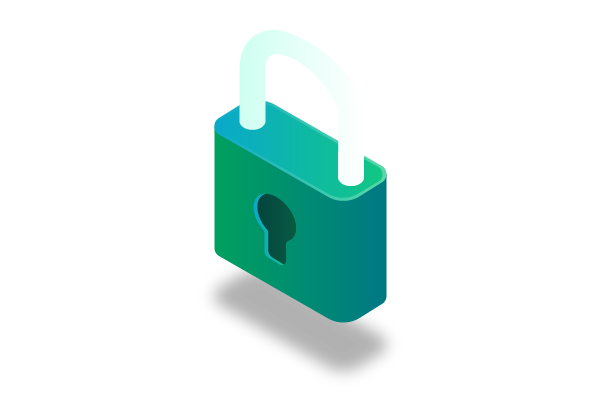The evolution of technology has brought us to the brink of a new digital frontier: the metaverse. Here, possibilities seem endless, and one of the cornerstones supporting this virtual realm is the concept of a “metaverse wallet.” For many, this might sound like sci-fi jargon, but in reality, it’s a critical component for those venturing into digital realms. In this article, we’ll break down the essentials of a metaverse wallet, and shed light on its crucial role in this next-generation digital universe.
As we increasingly find our lives intertwined with digital experiences, it’s only natural that our assets, currencies, and transactions evolve in tandem. Just as physical wallets transformed into digital ones for fiat currencies, the metaverse wallet is the next leap, catering to the needs of a fully immersive virtual world.
Before diving into the depths, it’s vital to grasp the core idea behind the metaverse wallet: it’s more than just a storage for virtual currency. It’s a gateway, an identity, and a security measure, all in one, within the metaverse.
What is a Metaverse Wallet?

A metaverse wallet is like a digital backpack specially designed for navigating the virtual realms. It’s your go-to tool for storing, trading, and keeping tabs on all your metaverse goodies. Think of it as a mixtape of public and private keys, ensuring your digital possessions remain safe and sound in this immersive digital playground. This wallet doesn’t just deal in virtual cash; it can snugly hold your digital lands, epic virtual gear, and even your digital self – your metaverse identity.
Also Read: Private Key and Public Key: Definition and Differences
In essence, the metaverse wallet is your trusty sidekick, making sure you’re ready for the adventures and transactions in these sprawling digital worlds. Whether you’re buying virtual properties, swapping unique in-game items, or simply managing your metaverse alter ego, this nifty tool is there to keep everything organized and secure. So, if you’re gearing up for metaverse life, a metaverse wallet is your must-have companion, ensuring your virtual assets stay right at your fingertips.
How Does a Metaverse Wallet Work?

A metaverse wallet plays a crucial role in the operation of virtual worlds, which are becoming increasingly popular for various applications, from gaming to social interaction and even virtual commerce. Here’s a more detailed explanation of how a metaverse wallet works:
Blockchain Technology
A metaverse wallet is typically based on blockchain technology. Blockchains are decentralized, distributed ledgers that record and verify transactions across a network of computers. This technology provides several key benefits for metaverse wallets:
- Transparency: Every transaction in the metaverse is recorded on a public blockchain. This means that anyone can view the transaction history, ensuring transparency and accountability.
- Security: Blockchains use advanced cryptographic techniques to secure transactions. This makes it difficult for unauthorized parties to tamper with transaction data or steal assets.
- Immutability: Once a transaction is recorded on the blockchain, it’s extremely difficult to change or erase. This ensures that the ownership and history of virtual assets are preserved.
Unique Wallet ID
When you create a metaverse wallet, you are assigned a unique wallet address or ID. This ID serves as a cryptographic representation of your wallet and is used to send and receive virtual assets. It’s essential to keep your wallet ID secure, as it is essentially your digital identity in the metaverse.
Transaction Details
When you purchase a virtual asset, the details of the transaction are recorded on the blockchain. This includes information such as the sender’s wallet ID, the receiver’s wallet ID, the asset being transferred, the quantity, and a timestamp.
Smart Contracts
Many metaverse platforms use smart contracts, which are self-executing contracts with predefined rules and conditions. Smart contracts automate transactions and asset ownership. For example, when you purchase a virtual land parcel in a metaverse, a smart contract can automatically transfer ownership to your wallet when the payment is confirmed.
Decentralization
The decentralized nature of blockchain technology means that no single entity has control over the metaverse or your wallet. This decentralized approach offers a democratic and transparent system where all participants have equal access and influence over the virtual environment.
Cross-Platform Compatibility
Metaverse wallets are often designed to work across different metaverse platforms. This allows users to access and manage their virtual assets seamlessly, even if they participate in multiple virtual worlds or games.
Asset Management
In addition to storing and managing virtual assets, some metaverse wallets offer additional features like the ability to trade, sell, or auction assets directly from the wallet interface. They may also support the creation of digital collectibles or non-fungible tokens (NFTs) that represent unique digital items.
A metaverse wallet is a key component of the virtual world, ensuring the secure and transparent management of virtual assets. It leverages blockchain technology to provide a decentralized, immutable, and open system where users can participate in various metaverse experiences while maintaining ownership and control of their digital assets.
The Role of Virtual Currency
The concept of virtual currency within the metaverse is a pivotal aspect that transcends the boundaries of traditional finance and gaming. It enables a wide range of functions and possibilities, further shaping the metaverse’s landscape. Here’s a deeper look at the role and implications of virtual currency:
Globalized Transactions
Virtual currencies in the metaverse are not constrained by physical borders. They allow users from around the world to engage in transactions seamlessly, breaking down the limitations of traditional banking systems and currency exchange. This global nature promotes cross-cultural interaction and trade on a scale previously unimaginable.
Economic Ecosystems
In the metaverse, virtual economies flourish. Virtual currency acts as the lifeblood of these economies, driving the creation, distribution, and consumption of digital goods and services. This dynamic ecosystem includes virtual real estate, digital fashion, art, entertainment, and much more. It opens up new avenues for employment, entrepreneurship, and investment.
Ownership and Scarcity
Many virtual currencies are built on blockchain technology, ensuring transparency and a limited supply. This introduces the concept of digital scarcity and true ownership. Users can possess unique digital assets, whether it’s a piece of virtual land, a rare in-game item, or a piece of digital art, with full proof of authenticity and ownership rights.
Interoperability
The metaverse is not confined to a single platform or universe. Different metaverse projects exist, and virtual currencies often have varying use cases. Interoperable virtual currencies enable users to transfer assets across different metaverse environments, expanding the possibilities for trade and interaction.
Decentralized Governance
Some virtual currencies in the metaverse come with governance rights. This means users have a say in the rules, policies, and development of the virtual world. Decisions regarding changes in the metaverse’s infrastructure or in-game economies can be made through decentralized governance, providing a sense of community and user-driven control.
Investment Opportunities
Virtual currencies have emerged as viable investment options. Just like stocks, cryptocurrencies, or real estate, they can appreciate in value over time. Virtual currency trading and investment markets are thriving, attracting speculators and investors looking to benefit from the growth of the metaverse.
Challenges and Risks
With the proliferation of virtual currencies comes regulatory, security, and ethical challenges. Governments are grappling with the need to regulate these new forms of digital assets. Security breaches, hacking incidents, and scams are also concerns. Additionally, as more aspects of life move into the metaverse, questions about digital privacy, data ownership, and surveillance arise.
Cultural and Social Impact
The introduction of virtual currencies fosters new forms of social interaction and cultural expression. The metaverse becomes a space for communities to form, gather, and define their own cultural norms and behaviors. Virtual currencies might be used to tip content creators, support charitable causes, or fund virtual events, further integrating the metaverse into the fabric of society.
Safety and Security Measures

The metaverse, a digital realm where users interact and transact with virtual assets, is inherently reliant on digital technology, making it susceptible to a range of cyber threats. These threats can come in various forms, from hacking attempts to phishing attacks, and they can have severe consequences if not adequately addressed. In response to these challenges, metaverse wallet developers have implemented a range of safety and security measures to protect the assets and personal information of users.
Encryption
To safeguard sensitive data, encryption technology is commonly employed. This includes end-to-end encryption for communication within the metaverse and robust data encryption for stored assets and wallet information. Encryption ensures that even if an unauthorized entity gains access to the data, it remains unreadable and unusable.
Two-Factor Authentication (2FA)
2FA adds an extra layer of security by requiring users to provide two different authentication methods, typically something they know (password) and something they have (e.g., a temporary code sent to their mobile device). This makes it significantly more challenging for unauthorized users to gain access to an account.
Biometric Verification
Many metaverse wallets leverage biometric data, such as fingerprint or facial recognition, to enhance security. This provides a convenient and secure way for users to access their assets while minimizing the risk of unauthorized access.
Cold Storage Solutions
Cold storage refers to storing digital assets offline, often on hardware devices that are not connected to the internet. This approach makes it extremely difficult for hackers to access the assets since they cannot be reached through online vulnerabilities. This is a preferred option for safeguarding valuable digital assets.
Regular Software Updates
Software updates are crucial to maintaining the security of metaverse wallets. Developers continuously identify and patch vulnerabilities, and these updates ensure that the wallet software remains resilient to emerging threats. Users are typically encouraged to keep their wallet software up to date to benefit from these security enhancements.
Security Audits
Many metaverse wallet developers subject their software to rigorous security audits by independent experts. These audits help identify vulnerabilities and weaknesses that may not be apparent during the initial development phase. Addressing these issues before they are exploited by malicious actors is a proactive security measure.
User Education
While developers can implement numerous security features, it is also essential for users to be aware of best practices for safeguarding their digital assets. This includes advice on creating strong, unique passwords, recognizing phishing attempts, and understanding the risks associated with sharing personal information.
Incident Response Plans
In case of security breaches or incidents, metaverse wallet developers often have well-defined incident response plans in place. These plans include procedures for containing the breach, mitigating damage, and notifying affected users promptly.
Regulatory Compliance
Depending on the jurisdiction and the nature of the assets stored in metaverse wallets, developers may need to comply with specific regulatory requirements related to financial transactions and data security. Adherence to these regulations is crucial for ensuring user safety.
In the metaverse, the combination of robust security features, ongoing vigilance, and responsible user behavior is essential for maintaining a safe and secure environment for users and their digital assets. As the metaverse continues to evolve, the security landscape will also adapt, requiring developers and users to remain adaptable and proactive in addressing new and emerging threats.
The Future Potential of Metaverse Wallets
As the metaverse keeps growing, metaverse wallets are set to play a much bigger role than just handling transactions. They’re gearing up to become versatile tools, capable of doing more than just managing your virtual coins. Picture this: metaverse wallets stepping into the world of virtual business contracts, linking up with decentralized finance (DeFi) systems, and even being used for metaverse governance decisions. The possibilities are wide-ranging, and with ongoing tech advancements, the boundary between the virtual and the real might blur even further.
In this evolving landscape, metaverse wallets are likely to transform into multi-functional hubs, offering a broader range of features. Imagine using your metaverse wallet not just to buy virtual goods, but also to sign digital agreements with other users or businesses within the metaverse. These contracts could govern things like property rights, service agreements, or even virtual employment.
Also Read: Gas Limit: Controlling Execution Costs
Plus, with DeFi integration, your metaverse wallet could help you manage and grow your virtual assets, potentially earning you passive income. On top of that, they might serve as a means for metaverse communities to collectively make decisions, utilizing voting mechanisms embedded in the wallets.
As technology continues to advance, the metaverse wallet’s potential is bound to expand. It’s not just about securing your digital currency; it’s about enabling a more immersive and functional metaverse experience. The line between the virtual and the real is poised to become increasingly indistinct, making metaverse wallets a crucial tool in navigating this evolving digital landscape.
Conclusion
We stand on the cusp of a digital revolution, and the metaverse wallet is a testament to the leaps we’re making into a previously unimaginable future. As an integral part of the metaverse ecosystem, it promises not just a means of transaction, but a new way of understanding identity, value, and participation in digital realms.
The importance of understanding and integrating with such tools cannot be understated, especially for those looking to be pioneers in the metaverse. It’s not just about staying updated; it’s about embracing and driving the change.
Lastly, as with any burgeoning technology, there’s an element of uncertainty. But if history has taught us anything, it’s that those who adapt, learn, and evolve with change are the ones who reap the most significant rewards. The metaverse and its wallets are here to stay, and the potential they hold is nothing short of transformative.
Disclaimer: The information provided by HeLa Labs in this article is intended for general informational purposes and does not reflect the company’s opinion. It is not intended as investment advice or recommendations. Readers are strongly advised to conduct their own thorough research and consult with a qualified financial advisor before making any financial decisions.

Joshua Soriano
I am a writer specializing in decentralized systems, digital assets, and Web3 innovation. I develop research-driven explainers, case studies, and thought leadership that connect blockchain infrastructure, smart contract design, and tokenization models to real-world outcomes.
My work focuses on translating complex technical concepts into clear, actionable narratives for builders, businesses, and investors, highlighting transparency, security, and operational efficiency. Each piece blends primary-source research, protocol documentation, and practitioner insights to surface what matters for adoption and risk reduction, helping teams make informed decisions with precise, accessible content.
- Joshua Soriano#molongui-disabled-link
- Joshua Soriano#molongui-disabled-link
- Joshua Soriano#molongui-disabled-link
- Joshua Soriano#molongui-disabled-link

